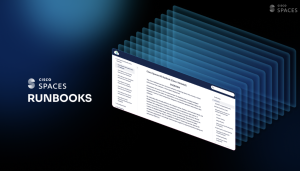
The pandemic has shown the world the need to amp up healthcare facilities to their fullest potential. When operating at full capacity, there are several concerns that can crop up if the hospital is not properly equipped. Safety of the patients, staff and the entire facility, quality of care being provided and overall efficiency are all dependent on how equipped a hospital is when faced with a crisis. This is where RTLS for hospitals has proven to be a boon.
What is RTLS?
A Real-Time Location System (RTLS) is a technology that makes use of wireless signals and IoT to pinpoint the location of tagged assets or personnel, within a defined zone. RTLS in hospitals is a system that identifies and tracks the location of assets or individuals inside the premises. This is achieved through the use of tags and sensors that transmit a signal to the RTLS software that is housed on the hospitals existing Wi-Fi network. The area of operation is defined by the range and coverage of the network. This information can be accessed by authorized staff whenever required, on a real-time basis. Because RTLS integrates technologies such as IoT, BLE and Wi-Fi, it offers accurate asset tracking that translates into a host of benefits such as improved and efficient workflow, reduced costs and increased healthcare quality.
RTLS for Hospitals: How Real-Time Location Systems Improve TCO
RTLS solutions offer several benefits to hospitals. In the pandemic, contact tracing is one of the primary benefits that it offers. Using RTLS, areas can be demarcated as containment zones, safe zones, etc, and the system can monitor the footfalls and flow of staff between these areas. With accuracy up to a few feet, administrators can easily keep track of who has been where, the duration they spent in each area and who they came in contact with. The pandemic also taught the world the value of equipment and space. With limited resources, it becomes very important to ensure that beds and medical equipment are not underutilized. RTLS eliminates the need to manually monitor and record such data, by providing real-time information and usage reports as well. Tracking the usage of medical equipment helps identify excess equipment and inventory shortages. RTLS also eliminates the problem of not having immediate access to vital resources like wheelchairs, IV pumps, etc, when the staff are in a hurry.
1. Optimizing Current Resources to Combat Hospital Staffing Shortages
Hospital staffing shortages can result in delayed medical care and a strain on the staff. These can easily be avoided through RTLS by automating workflows, removing the need for manual asset tracking, automating inventory monitoring and restocking, mapping staff and asset movement, etc. This can ensure that staff are neither overburdened or underutilized and also eliminates the problem of overstaffing on lean days.
2. Patient and Staff Safety and Security in Hospitals
RTLS enables staff members to send panic alerts from RFID wearables. This gives responders the specific location of the alert so that the closest rescue resource can be deployed. This allows for more control of the work environment. The alert can be sent discreetly by the staff by simply pressing a button on their badge, thereby avoiding a situation of panic among patients. The system can be upgraded to provide real-time location updates, so if the patient is being moved while the alert is triggered, the responding staff has real-time visibility of the patient location. This can be further enhanced through the use of maps of the building, individual floors, nursing stations and other important areas. RTLS can also work in tandem with security systems such as video monitors and notification systems to enhance the overall safety of the hospital.
How do RTLS Systems Work?
RTLS works by creating an enclosed indoor positioning network that is created by incorporating a specific combination of hardware and software based on the requirement and use cases.
Active vs. Passive RFID RTLS
RFID readers are used predominantly in an RTLS system. The readers are spread out throughout the area and they receive radio signals sent by active RFID tags that are in turn attached to assets and equipment or worn by the staff, visitors and patients. When the receivers get a signal, the location of each tag is calculated using triangulation and similar methods. Passive RFID systems are much more cost effective than active RFID systems. A reader sends out a signal that is received by RFID tags, which in turn respond with their own signal. Active RFID tags are usually battery-powered, but they provide greater capabilities than passive RFID.
Bluetooth Low Energy (BLE) Framework
Bluetooth is increasingly becoming the preferred technology used in asset tracking. Besides offering a longer battery life, bluetooth is also readable by multiple devices, including smartphones. But one of the main benefits of choosing a BLE framework is the location accuracy of within one meter that it offers.
Ultra Wide-Band (UWB)
If precision is of prime importance, then ultra wide-band is the technology of choice. Though much more expensive than BLE, UWB offers better precision. It uses a large frequency signal with at least a 500MHz bandwidth and can achieve positioning accuracy of within centimeters. This system measures distance based on signal arrival time and is hence considered one of the fastest currently available.
Wi-Fi Technology
One of the main benefits of Wi-Fi RTLS is that it can be deployed over your existing network. Wi-Fi asset tracking uses your existing WLAN infrastructure and hence reduces investment required. The downside, however, is that it is not as efficient. Wi-Fi RTLS allows tags to communicate with multiple access points via Wi-Fi. The location of the tag is determined based on the amount of time it takes for the signal to be received. Through Wi-Fi RTLS, it is possible to receive location data within a few feet.
Learn more about RTLS in hospitals here




